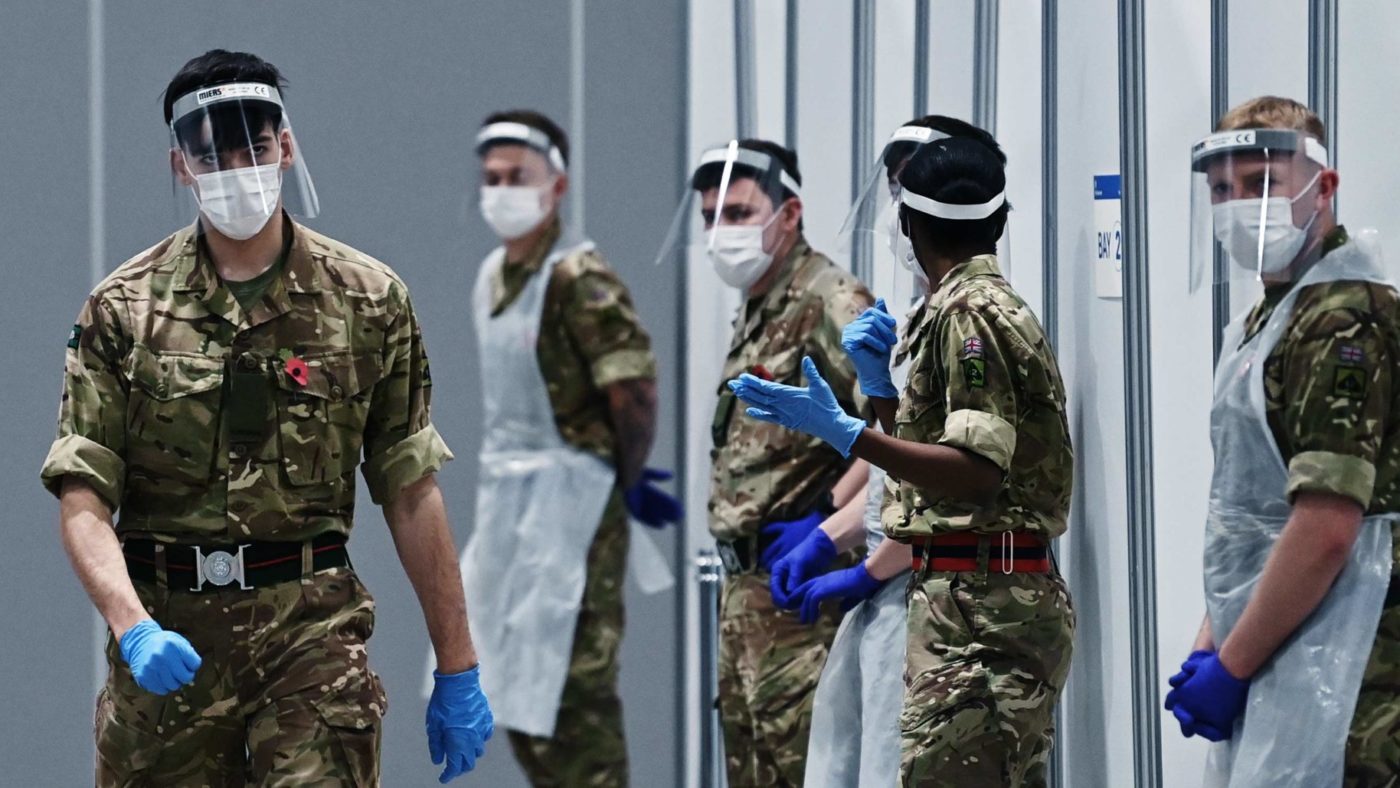News that military personnel will be helping with the rollout of Covid vaccinations may have been billed in some quarters as Boris Johnson ‘sending in the army’, but the truth is that the Armed Forces have always been an integral part of our pandemic response.
As you would expect during an unprecedented civil emergency, the first wave saw up to 20,000 military personnel put on standby as part of a Covid Support Force. They abandoned their usual posts, rolled up their sleeves and set to work driving ambulances, transporting equipment, delivering PPE, building the NHS Nightingale hospitals, supporting Public Health England from the Defence Science and Technology Laboratory and manning testing stations across the country.
Over 5,000 military personnel are currently supporting civil authorities on Operation RESCRIPT, the military effort in support of the government’s campaign to tackle Covid-19. In Manchester, Kent, Derbyshire, Yorkshire and Lancashire, they are being deployed to support community testing of social care staff, key workers, public facing occupations such as bus drivers, hauliers and those in high-risk environments such care homes and shared accommodation for the homeless.
A further 14,000 personnel are being held on standby to assist where and when needed. Doing so often means leaving their families to join the fight against Covid.
Coming from a military family, and having worked for a military charity, I know full well what our Armed Forces are capable of, but we need to consider what it means when we call in the cavalry. Asking the Armed Forces to deal with a civil emergency should be as a last resort. After all, it means something else they are doing has to be dropped. This is not to say our personnel should not be front and centre of the Covid relief effort, just that we should be aware of what that involvement entails.
After all, Jack and Tommy aren’t just sitting twiddling their thumbs in their barracks or hanging out with their chums at one of HM Naval Bases. In February, for instance, the forces were called upon – as they are most years – to help communities affected by flooding and to support the fire service and the Environment Agency in putting up flood defences and sandbagging people’s doorways.
In August, the UK was faced with a surge of migrants and refugees crossing the Channel taking advantage of the quieter seas, and the Royal Navy was called upon to help patrol the seas, and a YouGov poll for the Telegraph showed that 71% of the public supported asking the Navy to redeploy to patrol the border to prevent illegal crossings, and 69% were happy for the RAF to drop what they were doing to assist Border Force.
It’s true that the versatility and adaptability of our Army, Navy and Air Force are unparalleled: they can build a bridge in a matter of hours, a hospital in days, and deploy a ship to patrol our shores at a moment’s notice. But a call for the Navy to help the Border Force to address migration across the English Channel or for the RAF to airlift people from a flooded village, or for thousands of Army troops to disperse to every region of the UK to administer Covid-19 tests, means something else isn’t getting done.
Armed forces across the world stand ready to support civil authorities when their capacity is overwhelmed, providing this from their spare capacity, without affecting core military objectives – and it’s hard to think of a worthier reason to do so than the Covid crisis. But this spare capacity isn’t infinite. Even in a time of relative peace, around 6,400 British servicemen and women were deployed at home and overseas this Christmas.
They are deployed in multiple continents on 39 operations in 46 countries across the globe – from Somalia to Mali, from Ukraine to Estonia – involved in peacekeeping, humanitarian relief, minesweeping, counterpiracy, fishery protection, monitoring of offshore energy installations and countering drugs smuggling, not to mention those training to go to war or serve in war-torn countries. All over the world we have troops deployed with Nato and other allies to protect the sovereign borders of nations and to provide military and developmental assistance.
We constantly hear that the Armed Forces are stretched to capacity, that they have been committed to more tasks than they are able to deliver, that people are leaving their otherwise decent careers because they don’t feel valued and supported. Back-to-back deployments or extended periods away from home are not conducive to a reasonable work-life balance, not to mention when personnel aren’t given the time they need to fully recover from injury or illness.
Yet time and time again we seem to be prepared to simply add to their existing duties without considering the impact. We are about to have a Strategic Defence and Security Review. It is imperative that this takes these demands into account. The focus of the review will undoubtedly focus on the most costly aspect of the military: the equipment. The million-pound frigate, the new aircraft, the number of tanks and rifles.
But it will also need to focus on the people we are expecting the world of and without whom there simply is no military. Ministers cannot continue to ignore the impact of redeploying the military. There are not an infinite supply of troops to reassign at short notice. Eventually, something will have to give, and the Government needs to consider the impact temporary diversions have on long term objectives, which don’t disappear when another disaster strikes. How will we be able to respond to emerging threats, or natural disasters, if everyone has been “pinged” for something else?
Click here to subscribe to our daily briefing – the best pieces from CapX and across the web.
CapX depends on the generosity of its readers. If you value what we do, please consider making a donation.


